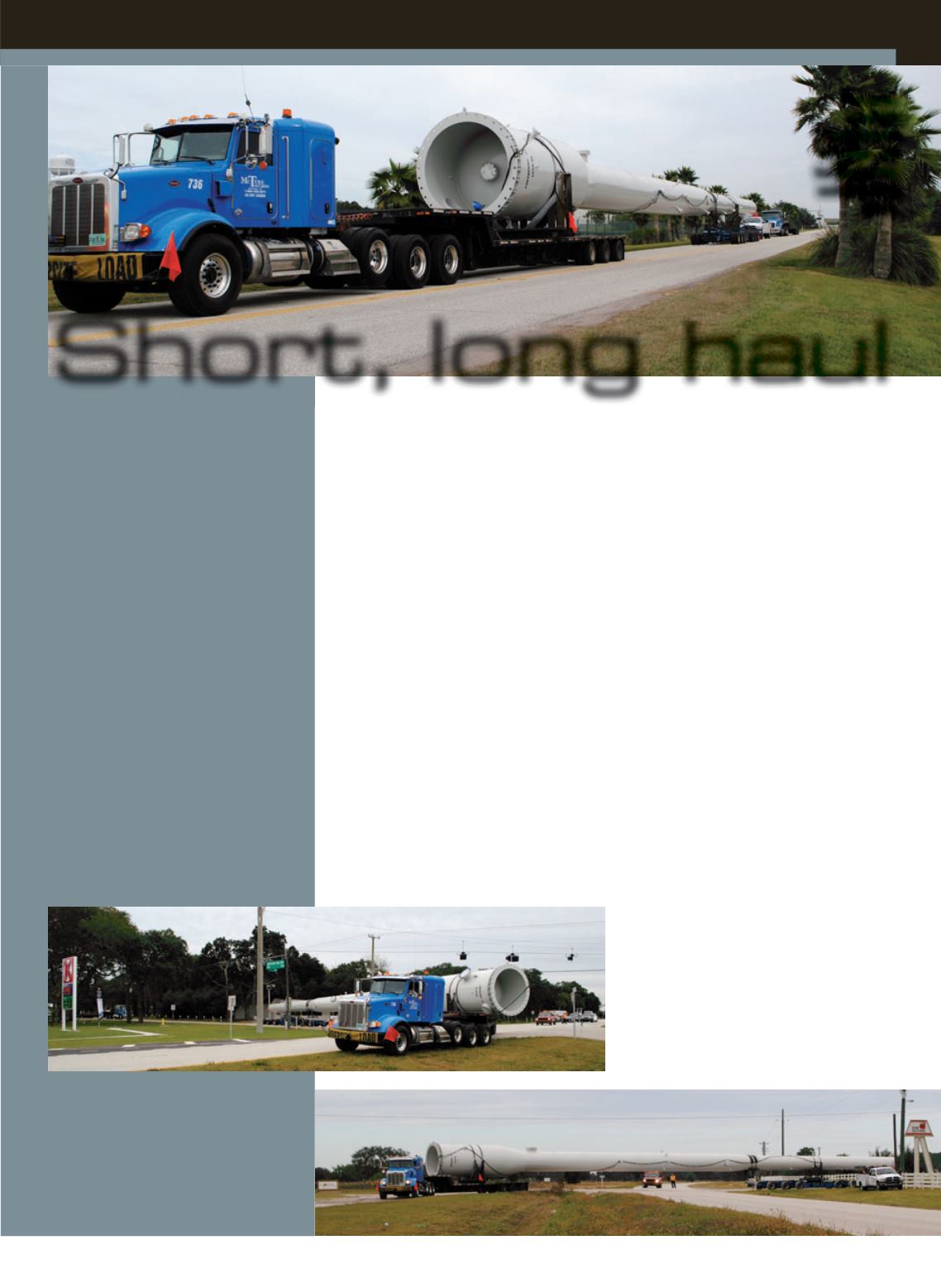
TRANSPORT
SITE REPORT
Hauling a 172-foot
mitigation stack required
precise planning for
McTyre Trucking.
M
cTyre Trucking Company,
Inc., of Orlando, FL,
was recently contracted
to deliver a mitigation stack from a
manufacturer in central Florida to Port
Manatee, FL. The smoke stack was
destined to be exported to the Middle East
for use in an oil refinery.
The first challenge of the project was to
perform route surveys to satisfy the state
and county permitting processes required
to haul such a long and heavy load.
“The challenges of the route were the
length of the stack, at 172 feet, and finding
a route with the least amount of turns
possible,” said Sean Kortuem, McTyre
Trucking project manager.
The route selected encompassed 45 miles
and involved using multiple rural roads
due to the size of the load and complexity
of the transport.
The haul was performed on December 2,
2013 in one day.
“Top speed was about 40 miles per hour,”
said Kortuem. “We used two civilian
escorts and two McTyre support vehicles
General contractor Beck said the
Barcelona team provided one of the
most professional crane lifts and
experiences they had ever seen.
Short, long haul
The route
selec ed
nc mpassed
45 m le
invol d usi g
multiple rural
roads.
55
FEBRUARY 2014
ACT
as well as the transport vehicle. The job
required four employees from the McTyre
team and two escort drivers.”
The loaded out length of the entire
transport was about 215 feet. The
mitigation stack was about 11 feet in
diameter.
To accomplish the delivery successfully
McTyre’s crews used bolster plates on a
48-foot step-deck trailer to support one
end of the stack while using a steerable
dolly on the opposite end, with 40 feet
of overhang, to allow the transport
configuration to steer independently
around the numerous turns until it
reached its destination.
“The stack was loaded onto our
equipment using a gantry crane at the
shipper,” said Kortuem. “Once the stack
was secured to the transporter at the
bolster plates we were able to make our
way over to the port.”
Once at the destination in Port Manatee,
the stack was transferred from the
transporter by a crane until loaded onto
the ship for its final destination.
Kortuem was proud of this project and
pleased with the expert work of the entire
McTyre team.
“The main challenge with this transport
was being able to make the turns during
the transport,” he said. “We needed to
determine how much rear overhang we
could allow and not have any issues with
tail swing in the opposite direction of the
turns.”
■
Finding a route with the least amount of turns was the goal of the McTyre team.
McTyre used a bolster plate on a 48-foot
step-deck trailer to support one end of
the stack while using a steerable dolly
with a bolster plate on the opposite
end, with 40 feet of overhang to allow
the transport configuration to steer
independently around the numerous turns
until it reached its destination.


